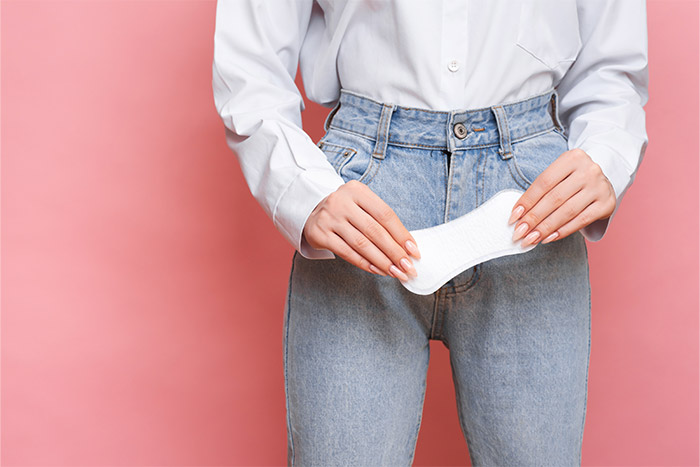Panty liners are a wardrobe essential for many women, offering a discreet and comfortable way to manage everyday vaginal discharge and moisture. But unlike their bigger sibling, the sanitary pad, panty liners are designed for lighter situations. So, when exactly do panty liners come in handy?
- Keeping Fresh Throughout Your Cycle: Healthy vaginal discharge is a normal part of your cycle. It helps keep things clean and balanced down there. But sometimes, this discharge can feel a little wet or sticky, which is where panty liners come to the rescue. SOFY pantyliners are ultra thin and breathable, so you can stay fresh and confident all day long.
- Lighter Period Days: As your period winds down, the flow becomes lighter. A bulky pad might feel like an overkill at this point. Panty liners are perfect for these lighter days, absorbing any remaining discharge and preventing unexpected staining.
- Spotting: Spotting can happen in between periods, due to ovulation or hormonal fluctuations. Panty liners provide a light layer of protection to catch any unexpected discharge and prevent staining.
- Pre-Period Protection: If your periods tend to be unpredictable, panty liners can be your safety net. Wearing one in the days leading up to your expected period can offer peace of mind and prevent any embarrassing leaks.
- More than Periods: Panty liners aren’t just for your cycle! They can also be helpful for occasional light bladder leakage, especially during exercise or when you have a cough or cold.
With so many panty liners available, it’s important to find one that suits your needs. SOFY pantyliners come in various types based on your flow. So, you can choose the one that you feel is the right fit for your flow. Panty liners are a convenient and comfortable way to feel fresh and confident throughout the month. So, don’t hesitate to incorporate them into your routine for everyday peace of mind.
FAQ’s
2. Are panty liners helpful on lighter days of my period?
Yes! As your period winds down and flow becomes lighter, regular pads can feel bulky. Panty liners are ideal in these moments—they absorb the minimal discharge and keep you protected from unexpected staining.
3. Can I wear panty liners when I’m not expecting my period?
Absolutely. If your cycle is irregular or unpredictable, wearing a panty liner before your expected period can give peace of mind and prevent embarrassing leaks.
4. Are panty liners useful for spotting between periods?
Definitely. Spotting can occur due to hormonal changes or ovulation. Panty liners offer gentle, light protection for these unpredictable days and prevent staining.
5. Can panty liners help with light bladder leakage or occasional dribbles?
Yes. Panty liners aren’t just for menstrual changes—they’re helpful for light bladder leakage too, such as during exercise, coughing, or sneezing.
6. What makes Sofy panty liners comfortable for everyday use?
Sofy panty liners are ultra-thin and breathable, designed to feel like a second skin. They let air circulate while staying discreet and shock-resistant, so you can stay confident and comfortable all day.
7. Can panty liners help with smell or wetness?
Yes, they manage everyday moisture and light leaks effectively, helping reduce dampness and odor throughout the day. These liners support hygiene by keeping your undergarments dry and fresh.
8. Are panty liners meant for heavy flow?
No—panty liners are not designed for heavy menstrual flow. They are ideal for light discharge, spotting, or the tail end of your period. For heavier days, regular pads or menstrual products are more appropriate.
9. Why choose liners instead of just pantyliners at nighttime?
Panty liners aren’t ideal for overnight use because they don’t allow enough airflow when your body rests. It’s better to go without one at night to let your skin breathe.
10. How often should panty liners be changed during the day?
Though not specified in the article, a general guideline is to change panty liners every 4–6 hours, or sooner if they become damp. This helps maintain hygiene and prevents irritation from moisture buildup.

